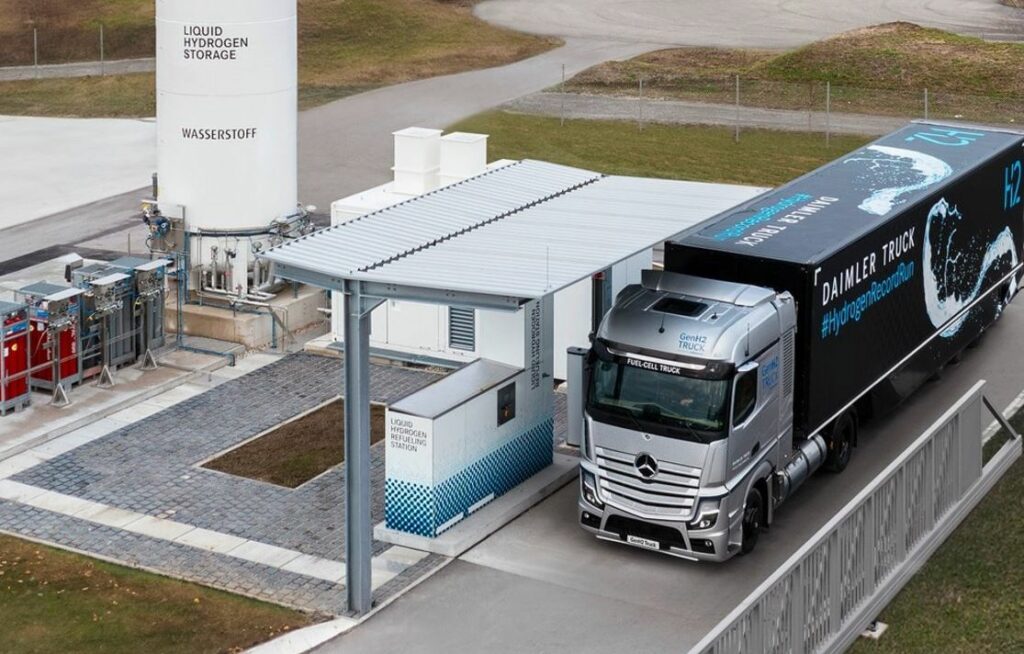Daimler Truck and Linde Engineering have achieved a significant milestone in the journey toward decarbonizing transportation with hydrogen.
Their collaborative effort has led to the development of sLH2, a groundbreaking process for handling subcooled liquid hydrogen. This innovative technology promises a range of benefits, from increased storage density and faster refueling to lower costs and superior energy efficiency. Let’s explore the goals, technology, potential impact, and challenges surrounding this transformative breakthrough.
The primary goal of the sLH2 technology is to revolutionize hydrogen infrastructure, making hydrogen refueling as convenient and efficient as diesel refueling. By developing a standardized refueling standard for hydrogen-powered trucks, Daimler Truck and Linde Engineering aim to facilitate the widespread adoption of hydrogen as a clean energy source for heavy-duty transportation. Their vision encompasses creating a robust refueling network across Europe to support the transition to zero-emission transport.
sLH2 technology involves a novel approach to handling liquid hydrogen, resulting in subcooled liquid hydrogen (sLH2). Compared to regular liquid hydrogen (LH2), sLH2 offers increased energy efficiency, reduced energy losses during refueling, and enhanced refueling capacity. This is achieved through the use of sLH2 pumps to slightly increase the pressure of the liquid hydrogen, thereby optimizing the fueling process. The technology eliminates the need for data transmission between the refueling station and vehicle, streamlining the refueling experience.
The introduction of sLH2 technology has the potential to advance zero-emission transport significantly. By enabling faster refueling, reducing operational costs, and increasing refueling capacity, sLH2 facilitates the widespread adoption of hydrogen-powered trucks for long-distance transport. This not only helps to reduce greenhouse gas emissions but also promotes energy independence and enhances air quality. The technology aligns with global efforts to combat climate change and achieve carbon neutrality.





